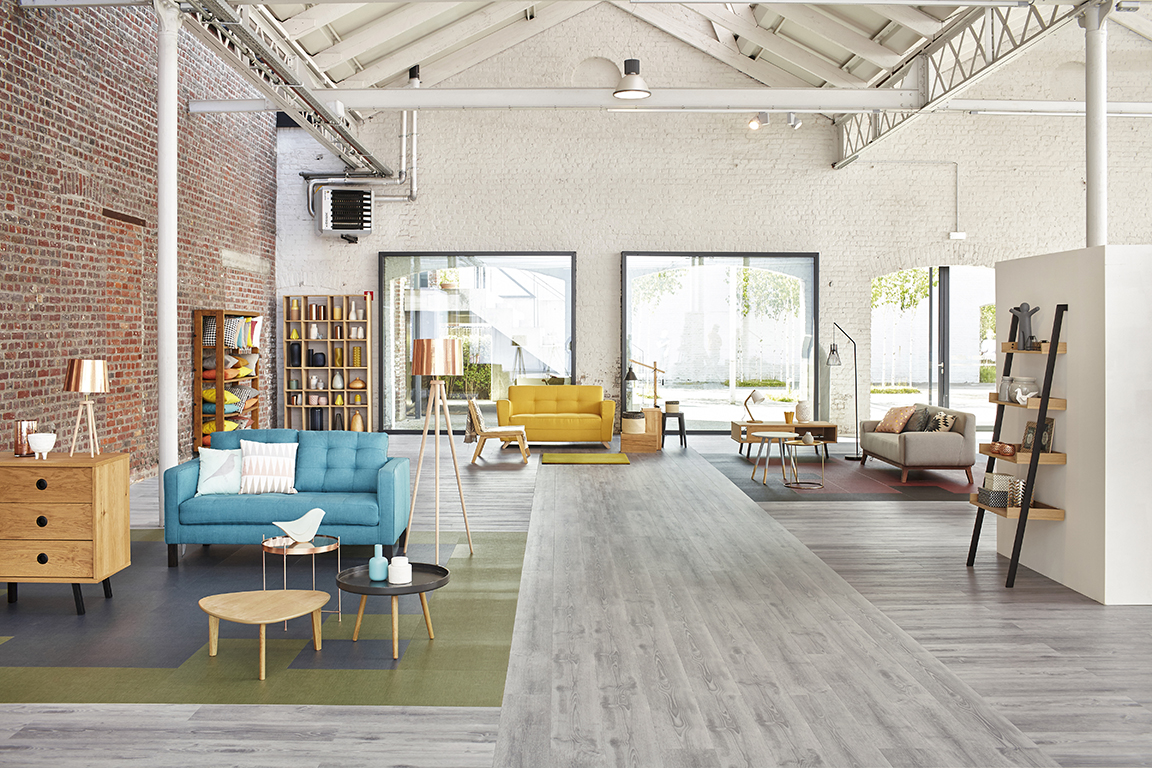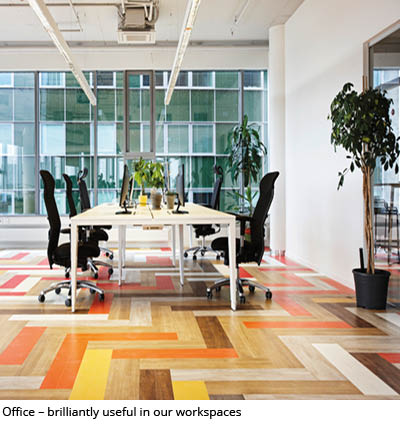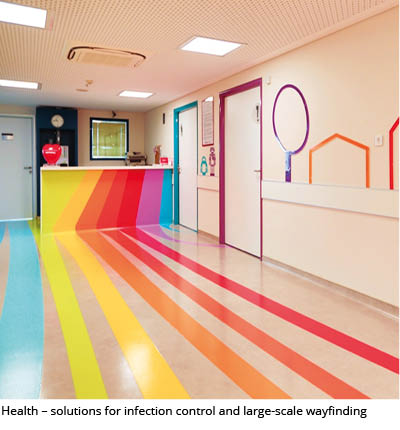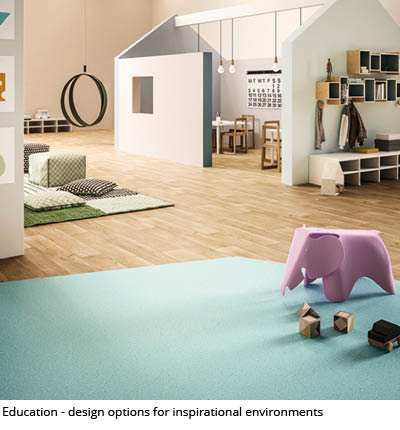A new situation
Now, more than ever it’s worth knowing why resilient flooring can help maintain a clean and hygienic environment.
COVID-19 has had an immediate and potentially long-lasting effect on how we use buildings. Our places of work, schools, healthcare settings and homes are under greater scrutiny.
Our habits have changed.
Buildings are not fully occupied; our interactions are online, or at a distance. Healthcare settings are reserved for the critically ill and emergencies. Schools and stores are being reconfigured for social distancing and homes have become multi-functional spaces.
Spatial planning will accommodate the necessary changes caused by this global pandemic. For now, we are learning how to mitigate its effects. Just as cleaning our hands regularly is vitally important, the frequency and manner our surfaces and floors are cleaned should be given attention. It’s obvious, but all our living and work environments need to be kept clean.
Disinfection, sanitisation and clean-ups are necessary procedures that resilient flooring can cope with, often multiple times in 24 hours.
What is it about resilient flooring that makes it easy-to-clean?
The resilient flooring industry in Europe produces some of the safest, most hygienic and easy-to-clean floor products, usable across commercial and residential environments.
What about the floor?
A resilient floor surface should be cleaned frequently and in line with the intensity of its use. What sort of environment is it, how many people does it accommodate, and with what needs? A cleaning regime should reflect all these attributes.
Naturally, it’s a good idea to review your regime when things change – in line with local health and safety requirements.
Whether a building is managed by a commercial service provider, or by its individuals, maintaining a resilient floor is straightforward:
Resilient floors are highly durable because of their intrinsically closed surfaces, meaning liquids aren’t absorbed, and dirt won’t be easily embedded.
These are added to strengthen performance, they reduce the impact of wear and hermetically seal the joins between tiles.
Stubborn marks can be treated and removed because resilient floors are, by construction, resistant to staining.
Resilient flooring in situ
An important note:
It’s important to note that performance and technical details vary across resilient flooring types and categories. Consult individual manufacturers product specifications for full data breakdowns, maintenance and cleaning guidance.
Safe for healthcare; safe for homes
A resilient floor is often found in healthcare spaces exactly because it meets the requirements of these high-risk spaces. Given the nature of these environments, floors need to be very durable, easily cleaned and able to cope with intense use. Maintaining mandated hygiene standards is critical to healthcare spaces.
Disinfection, sanitisation and clean-ups are necessary procedures that resilient flooring can cope with, often multiple times in 24 hours. Resilient flooring is installed in both clinical and non-clinical areas because of the numerous options available.
How to clean resilient floors
As a general guide, resilient flooring can be cleaned in a few simple steps:

Where can I find more information?
Each ERFMI member has individual advice for their products, cleaning product recommendations and guidance for adapting floor cleaning regimes as a result of the COVID-19 Coronavirus outbreak.
Find contact details for our members here.
Need to reference this in future?
Download a pdf version of this post here.




